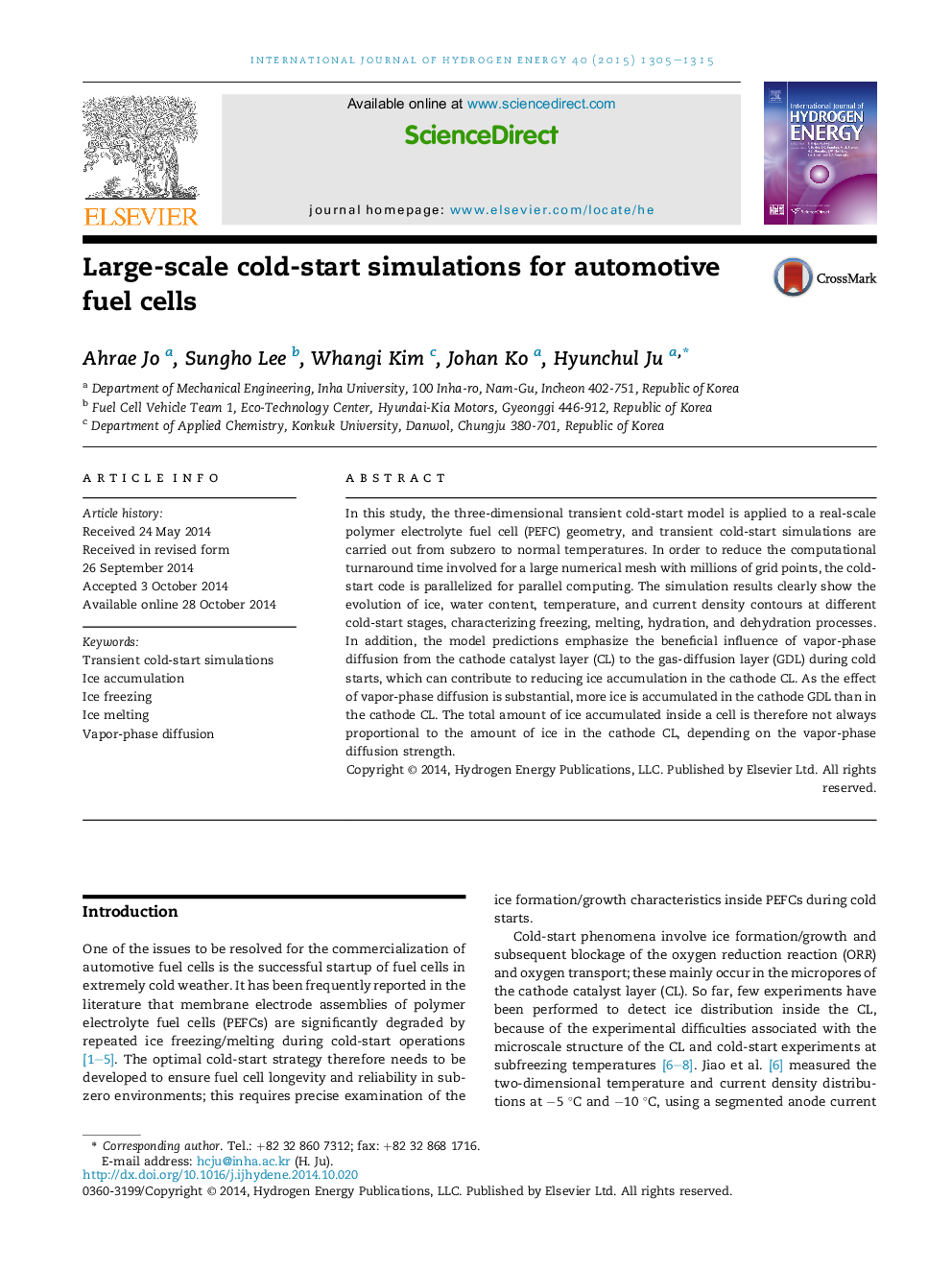| Article ID | Journal | Published Year | Pages | File Type |
|---|---|---|---|---|
| 1270227 | International Journal of Hydrogen Energy | 2015 | 11 Pages |
•We studied cold-start behaviors of real-scale PEFC geometry.•The total cumulative ice mass was even higher in low cathode stoichiometry.•As the effect of vapor phase diffusion, ice is accumulated in the cathode GDL.•The total amount of ice mass in the cathode CL is always not a good indicator.
In this study, the three-dimensional transient cold-start model is applied to a real-scale polymer electrolyte fuel cell (PEFC) geometry, and transient cold-start simulations are carried out from subzero to normal temperatures. In order to reduce the computational turnaround time involved for a large numerical mesh with millions of grid points, the cold-start code is parallelized for parallel computing. The simulation results clearly show the evolution of ice, water content, temperature, and current density contours at different cold-start stages, characterizing freezing, melting, hydration, and dehydration processes. In addition, the model predictions emphasize the beneficial influence of vapor-phase diffusion from the cathode catalyst layer (CL) to the gas-diffusion layer (GDL) during cold starts, which can contribute to reducing ice accumulation in the cathode CL. As the effect of vapor-phase diffusion is substantial, more ice is accumulated in the cathode GDL than in the cathode CL. The total amount of ice accumulated inside a cell is therefore not always proportional to the amount of ice in the cathode CL, depending on the vapor-phase diffusion strength.
